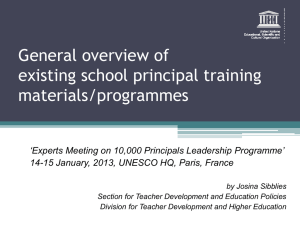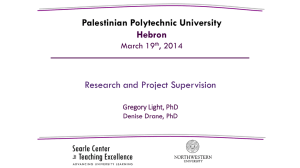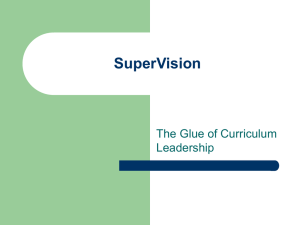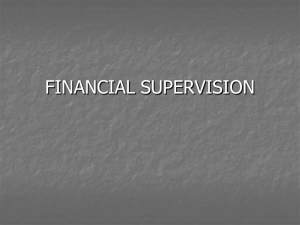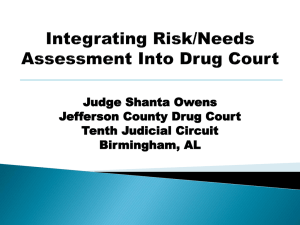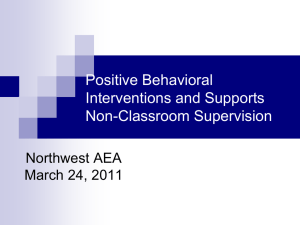Supervision of Common Areas: Lunch & Recess Duty
advertisement
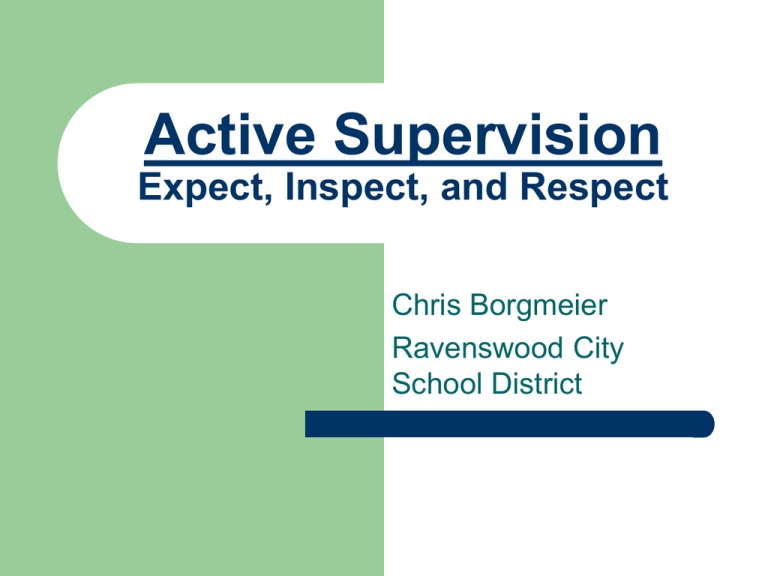
Active Supervision Expect, Inspect, and Respect Chris Borgmeier Ravenswood City School District Most Common Reasons for Misbehavior in Common Areas: Expectations & routines are not clear –If we expect students to behave responsibly, the adults in the school must come to a specific agreement on what constitutes responsible behavior. Expectations have not been taught Insufficient supervision (inactive; not scanning) Inconsistent supervision Emotional supervision Insufficient positive feedback to students behaving responsibly Inconsistent use of consequences for misbehavior EXPECT, INSPECT, & RESPECT Active supervision works well in: Large volume areas High census areas (lots of students) Lightly staffed areas (1 or 2 adults for every 80+ kids) Unstructured activities (kid-directed) areas such as playgrounds, cafeterias, hallways, etc. Expect, Inspect, & Respect EXPECT: Teaching Expectations – INSPECT: Active Supervision – – – Develop and teach expectations Active Roaming & Scanning Develop Clear Consequences REACT - Consistently use consequences RESPECT: Positive Interactions – – Recognize students for following expectations Positive interactions with students Examining the Physical Space, Routines, and Traffic Patterns Are there any safety concerns in the area? How can we monitor all areas of the space? – – – Planning Supervision Traffic patterns Active scanning Knowing & Planning for Student Activities & Traffic Patterns Activity: Examining the Physical Space Draw a map of the common area in which you work Draw traffic patterns for supervisors Draw traffic patterns for students – – – # of supervisors present # of students present Identify specific areas of concern EXPECT Teaching Expectations Develop consistent expectations across all staff working in each common area Teach & practice the expectations w/ the students – – – – Boundaries of the area Specific behavioral expectations Attention signal How to enter/leave the area Activity: Defining Expectations Identify the following: 1. Boundaries/ where students should/should not be 2. How to arrive/leave the area 3. Attention Signal 4. List 5-10 behaviors expected by staff 5. How you can formally teach these expectations to students – develop a lesson plan to teach behavioral expectations Booster Lessons: Reviewing Expectations When might a refresher be necessary? – – – – Following breaks (winter break, etc.) If behavior seems to be breaking down For students who are not following the rules For new students INSPECT Active Supervision Prevention/ Being Proactive • • • Constant Movement Scanning Precorrect Consistent Responding • • • Consistently enforcing consequences Being assertive Catching students doing right thing How Does Active Supervision Work? Increasing consistency and accountability for student behavior Increases opportunities to Prevent & React: – – Catch problems before they develop & precorrect Consistent monitoring and responding to student behavior both appropriate & inappropriate Constant Movement The Supervisor should move an average of 30 feet a minute while supervising playground activities Purposeful Movement • Targets known problem areas, activities, groups, and individuals • Plan your movement patterns to meet needs of setting • Don’t become too predictable • Don’t get caught congregating w/ other staff or groups of students Scanning Extends ability to supervise large areas Increases opportunities for positive contact Increases consistency in implementing rules Know zones/areas to maximize supervision & scan from those areas regularly Effective Scanning Techniques (a) (b) (c) Look & Listen Target known problem areas, activities, groups, and individuals Target both appropriate and inappropriate behaviors RESPECT Research High rates of positive contact with individuals or groups of students can be expected to significantly reduce student problem behavior for up to 90% of all students React & Respect Delivery of Consequences – – – Immediate Consistent Contingent Teach consequences to students Reinforcement for appropriate behaviors (4:1 ration) Activity: Responding to Behavior Devise responses & strategies for: – – Positive Contacts & Reinforcement Correction strategies Strategies for responding to misbehavior Know which behaviors you will be targeting and Know how you’ll respond in advance
